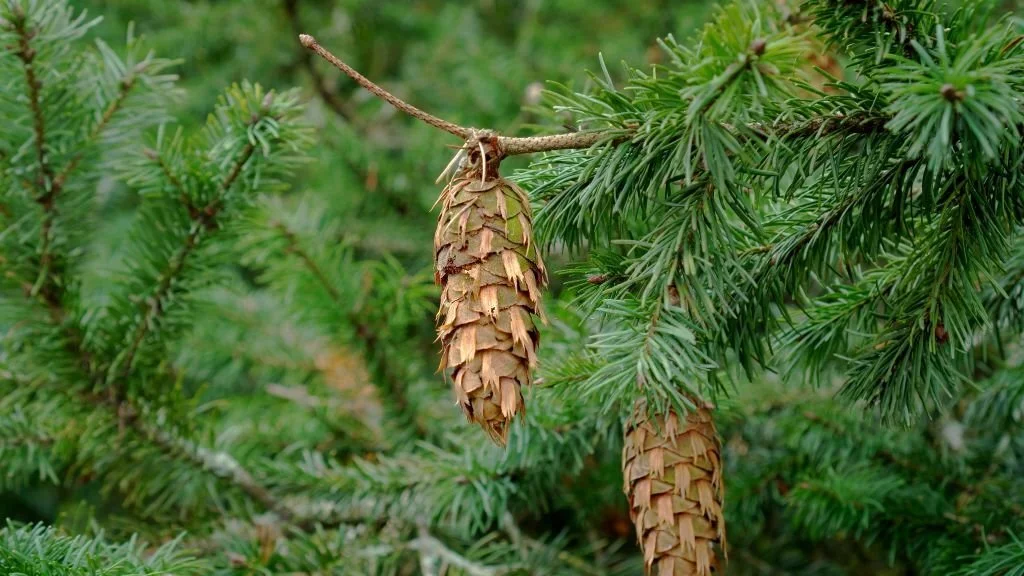In the vast tapestry of the natural world, coniferous trees stand as enduring sentinels, offering shelter, resources, and a profound ecological presence. Two prominent members of this evergreen cohort are the Douglas fir (Pseudotsuga menziesii) and the diverse family of pine trees (genus Pinus). These arboreal giants play pivotal roles in ecosystems, industry, and landscapes across the globe. As we embark on this exploration, our goal is to illuminate the distinctions between Douglas fir and pine trees, shedding light on their taxonomy, distribution, and the unique attributes that set them apart. In the realm of forestry, landscaping, and natural wonder, the tale of Douglas fir and pine unfolds with captivating intricacies.
Taxonomy and Classification
Before delving into the specifics of Douglas fir and pine trees, it’s essential to understand their taxonomic positions. Douglas fir, scientifically known as Pseudotsuga menziesii, belongs to the genus Pseudotsuga and the family Pinaceae. In contrast, the term “pine” encompasses a diverse array of species falling under the genus Pinus, also within the family Pinaceae. This distinction in scientific classification underpins the uniqueness of each tree type and hints at the variety of characteristics we’ll explore.
Geographic Distribution
Nature’s hand has cast Douglas fir and pine trees across a wide geographic canvas. Douglas firs grace a more limited range, primarily thriving in the western regions of North America, from British Columbia down to Mexico. Pine trees, on the other hand, offer a far-reaching spectrum. Pine species are found on almost every continent, adapting to climates as varied as the boreal forests of Canada, the Mediterranean landscapes of southern Europe, and the high-altitude habitats of the Himalayas. This extensive global distribution showcases the adaptability and diversity of the pine family, contrasting with the more localized presence of Douglas fir. As we journey deeper, we’ll uncover the environmental factors that have shaped their distributions and their roles in ecosystems near and far.
Physical Characteristics
Douglas fir and pine trees exhibit notable differences in their physical attributes. Douglas fir is renowned for its towering stature, often reaching heights of 200 feet (60 meters) or more. Its branches extend horizontally from the trunk, creating a pyramid-like shape. The needles of the Douglas fir are flat, fragrant, and radiate from the twig, resembling a bottlebrush. In contrast, pine trees encompass a diverse group, each with its unique physical characteristics. Pine trees typically have elongated, slender needles that grow in bundles, usually in groups of two, three, or five, depending on the species. Their shapes vary from the tall, straight trunks of Eastern White Pine to the gnarled and picturesque forms of Bristlecone Pine.
Wood Characteristics and Uses
The wood of Douglas fir and pine trees diverges in several aspects. Douglas fir wood is known for its strength, durability, and straight grain. It ranges in color from light yellow to reddish-brown and is prized for its versatility. This wood is commonly used in construction, furniture making, and for crafting musical instruments.
Pine wood, found in a plethora of species, is typically lighter in color, ranging from pale yellow to a light reddish-brown. It is softer than Douglas fir and often exhibits a prominent grain pattern. Pine is a popular choice for interior woodwork, including paneling, cabinetry, and flooring. It is also widely used in the production of paper and cardboard.
Ecological Roles
Both Douglas fir and pine trees play integral roles in their respective ecosystems. Douglas fir forests provide habitat and forage for a variety of wildlife, including deer, elk, and numerous bird species. The fallen needles create a nutrient-rich duff layer, which promotes soil health and aids in the growth of understory plants.
Pine forests, depending on the species and region, offer similar ecological benefits. They provide habitat for a diverse array of wildlife, from squirrels to owls. Additionally, many pine species have cones that release seeds in response to fire, helping to regenerate forests after wildfires.
Both tree types also contribute to carbon sequestration, capturing and storing carbon dioxide, thus playing a crucial role in mitigating climate change.
These ecological roles underscore the importance of preserving and managing both Douglas fir and pine forests for their ecological and environmental significance.
Commercial and Economic Significance
The economic impact of Douglas fir and pine trees cannot be understated. Douglas fir, prized for its strong and versatile wood, plays a significant role in the timber industry. It is commonly used in construction for framing, flooring, and structural applications. Additionally, its pulpwood is vital for paper and cardboard production.
Pine trees, with their wide variety of species, contribute substantially to the global economy. Southern Yellow Pine, for instance, is a sought-after wood for construction in the southern United States, while Eastern White Pine is favored for its lightweight and fine grain in furniture production. Moreover, the pine resin industry extracts valuable materials like turpentine and rosin, used in diverse applications, including paint and varnish production.
Landscaping and Ornamental Use
Both Douglas fir and pine trees have found their way into the world of landscaping and ornamental horticulture. Douglas firs, with their imposing height and symmetrical shape, are often used as Christmas trees in many parts of the world. They also make impressive additions to larger landscapes, providing shade and visual interest.
Pine trees, especially certain species like the Eastern White Pine and Scots Pine, are popular choices for landscaping due to their adaptability and aesthetic appeal. Their evergreen foliage provides year-round greenery, and their diverse growth habits make them suitable for a wide range of garden styles.
Conclusion: Choosing Between Douglas Fir and Pine
In the grand tapestry of nature and human civilization, both Douglas fir and pine trees have carved out distinct roles. Douglas fir stands tall as a formidable timber resource, its wood adorning our homes and supporting our structures. Pine trees, a diverse family of conifers, offer a multifaceted economic and ecological presence, shaping landscapes and industries across the globe.
Choosing between Douglas fir and pine ultimately depends on the intended purpose. If strength, durability, and a straight grain are paramount, Douglas fir prevails. If versatility, diverse appearances, and adaptability are key, various pine species provide an array of options.
As stewards of the natural world, we must recognize the significance of both these tree types. Their ecological roles, economic contributions, and aesthetic value enrich our lives and the planet. Whether in a forest’s embrace or as an elegant addition to our gardens, Douglas fir and pine trees continue to thrive, leaving their indelible mark on the world.




